Nem Rán: Basic Information
Pronunciation
Alternative Name(s)
chả ram or ram (in Central Vietnam)
Dish Type
Course
Mealtime
Popular Nem Rán Variations
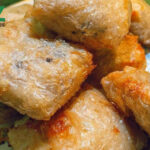
Nem Rán Cua Bể (Nem Vuông)
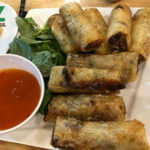
Nem Ốc
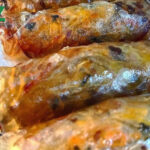
Nem Rán Chay
Nem Rán: Ingredients and Preparation
Main Ingredients
Main Cooking Method
Preparation Process
Nem Rán: A Deep Dive
Cultural Significance
Taste
Texture
Aroma
Color
Serving Style
Serving Temperature
Accompaniment
Occasions
Seasons
Special Diets
Calories
Popularity
Popular Similar Dishes
- Chả Giò
- Lumpia
- Egg rolls
Popular Dining Area
Nem rán, also known as chả giò (in Southern Vietnam) or chả ram (in Central Vietnam), is a popular fried spring roll dish originating from Northern Vietnam.
These large spring rolls are traditionally wrapped in bánh tráng gạo, a type of rice paper commonly referred to as bánh đa nem.
The filling for Nem rán is a rich and savory blend of ground meat, which can include pork (most common), crab, and shrimp, along with ingredients like glass noodles, carrots, eggs, and onions.
Nem rán is typically deep-fried until golden and crispy, known for the crispy texture achieved through the frying of the rice paper wrappings.
These spring rolls are often cut into smaller pieces for serving and are commonly enjoyed with bún (rice vermicelli), accompanied by fresh herbs and a distinctive dipping sauce.
Nem rán is not only a culinary delight but also a symbol of Vietnamese culture and tradition, often featured in festive celebrations such as Tet holidays and family gatherings.
I’m here to detail the specifics of the dish, including its primary ingredients, variations, and accompaniments. I’ll also focus on dishes that feature nem rán, weigh its pros and cons, differentiate it from chả giò, and answer some FAQs, along with discussing akin dishes.
Key Points
Nem Rán Images
What Are The Main Ingredients of Nem Rán?
Nem rán typically consists of the following 6 main ingredients:
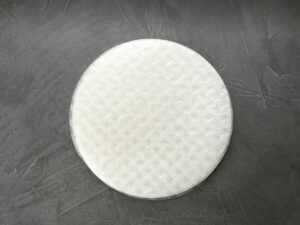
Wrapper
Rice paper is used to encase the filling.
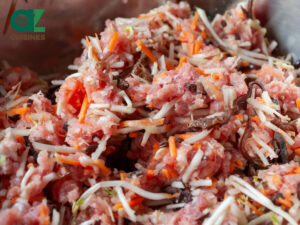
Ground Meat
Usually pork is used, but variations may include other types of meat.
Optional: finely chopped fresh shrimp, ground crab meat, or soaked and chopped dried shrimp.

Noodles
Glass noodles (or miến) made from arrowroot or mung bean starch are included. The mung bean version is often preferred for nem rán.
The glass noodles are soaked until soft, then cut into small pieces

Vegetables
Consists of wood ear mushrooms, shiitake mushrooms, kohlrabi, bean sprouts, and carrots.
If kohlrabi is not in season, it can be substituted with julienned jicama or onions, along with bean sprouts.
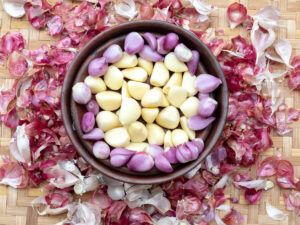
Seasonings
Shallots, garlic, salt, pepper, sugar, and sometimes fish sauce are used to flavor the filling.

Binding Agent
Egg yolks are used to help bind the ingredients together. Egg whites can also be used, but too many eggs can cause excessive bubbling during frying.
These ingredients, combined in various proportions, give rise to the diverse nem rán variations.
What Are Different Variations of Nem Rán?
Nem rán, a beloved Vietnamese dish, comes in 3 delightful variations, each with its own unique flavors and ingredients:
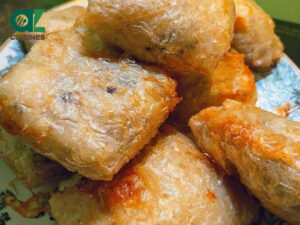
Nem Rán Cua Bể (Nem Vuông)
A Hải Phòng specialty, distinct for its square shape and unique folding style. It’s also known as Nem Vuông, Nem Vuông Cua Bể, or Nem Vuông Hải Sản.
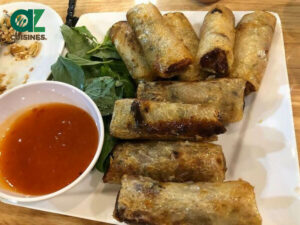
Nem Ốc
Be prepared in a manner similar to other nem rán varieties but with snails as a primary ingredient.

Nem Rán Chay
A vegetarian version of nem rán that excludes meat and seafood, focusing on vegetables and possibly tofu or other plant-based proteins while maintaining the traditional flavors and preparation methods.
Exploring these variations of Nem Rán reveals the importance of choosing the right accompaniments to enhance their flavors and complete the culinary experience.
What to Serve with Nem Rán?
To complement nem rán (Vietnamese spring rolls), consider serving the 4 following accompaniments:
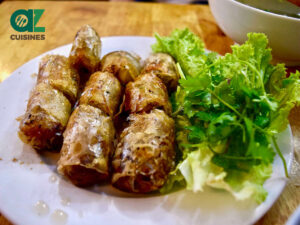
Fresh Herbs and Greens
Essential for enhancing the flavor of nem rán, you should include lettuce, cilantro, Vietnamese balm, a few sprigs of perilla, and some fresh bean sprouts.

Rice Vermicelli (Bún Rối)
A serving of rice vermicelli noodles can be a wonderful addition.
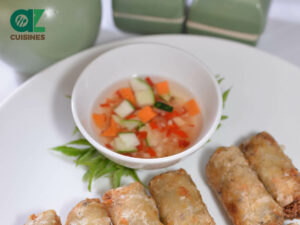
Vietnamese Dipping Sauce (Nước Chấm)
It’s important to note that nem rán is often served with a dipping sauce made from fish sauce, lime juice, sugar, garlic, and chili. Pickled vegetables such as pickled papaya or pickled kohlrabi are often added to the dipping sauce.
These accompaniments not only complement the flavors of nem rán but are also integral to the dishes that typically feature these spring rolls, creating a harmonious and complete meal.
Which Dishes Typically Feature Nem Rán?
Nem rán can be integrated into various other dishes to create delicious combinations. Here are 2 of the most popular dishes:
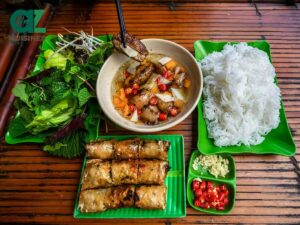
Bún Chả with Nem Rán
Bún chả is a Vietnamese dish traditionally served with grilled pork over a bed of rice vermicelli noodles and herbs, with a side of dipping sauce. To incorporate Nem rán, you can either add it to the dish as an extra element or substitute it for the grilled pork.

Bún Đậu Mắm Tôm with Nem Rán
This dish is a combination of fried tofu, rice vermicelli noodles, fresh herbs and vegetables, boiled pork, and mắm tôm (fermented shrimp paste). Adding nem rán to this dish introduces an additional crispy texture and a rich, savory flavor that harmonizes well with the strong flavors of mắm tôm and the freshness of the herbs and vegetables.
In these dishes, the integration of Nem Rán highlights its versatility and appeal, but also brings to light the pros and cons of its use.
Pros and Cons of Eating Nem Rán
Nem rán, also known as Vietnamese spring rolls, is a popular dish with several pros and cons:
Pros
Cons
Considering these aspects of Nem rán not only sheds light on its own culinary value but also aids in drawing a more informed comparison with Chả giò, another beloved Vietnamese dish.
Nem Rán vs. Chả Giò: What Are The Differences?
Nem rán and chả giò are both Vietnamese dishes that refer to fried spring rolls. However, there are regional differences in terms of origin, ingredients, size, serving styles and dipping sauce:
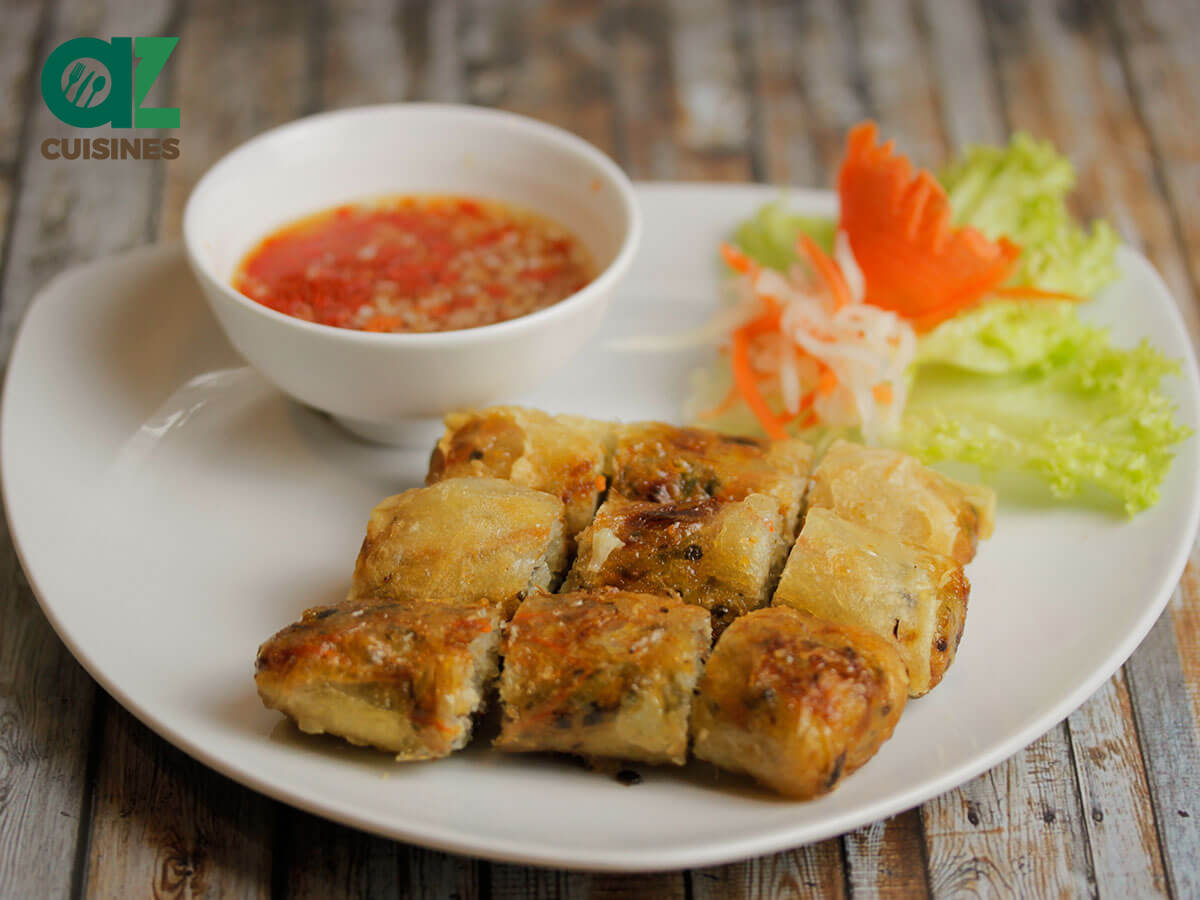
Nem Rán
Region: Originates from Northern Vietnam
Wrapper: Uses bánh tráng gạo (rice paper, commonly called bánh đa nem)
Filling: Typically includes ground meat (such as pork, crab, shrimp), glass noodles, carrot, egg, and onions, often emphasizing seafood
Size: Generally large, served in smaller segments
Serving Style: Usually accompanied by bun (vermicelli noodles), fresh herbs, and a dipping sauce
Dipping Sauce: Accompanied by a warm, diluted mixture of fish sauce, water, sugar, vinegar, with pickled vegetables.
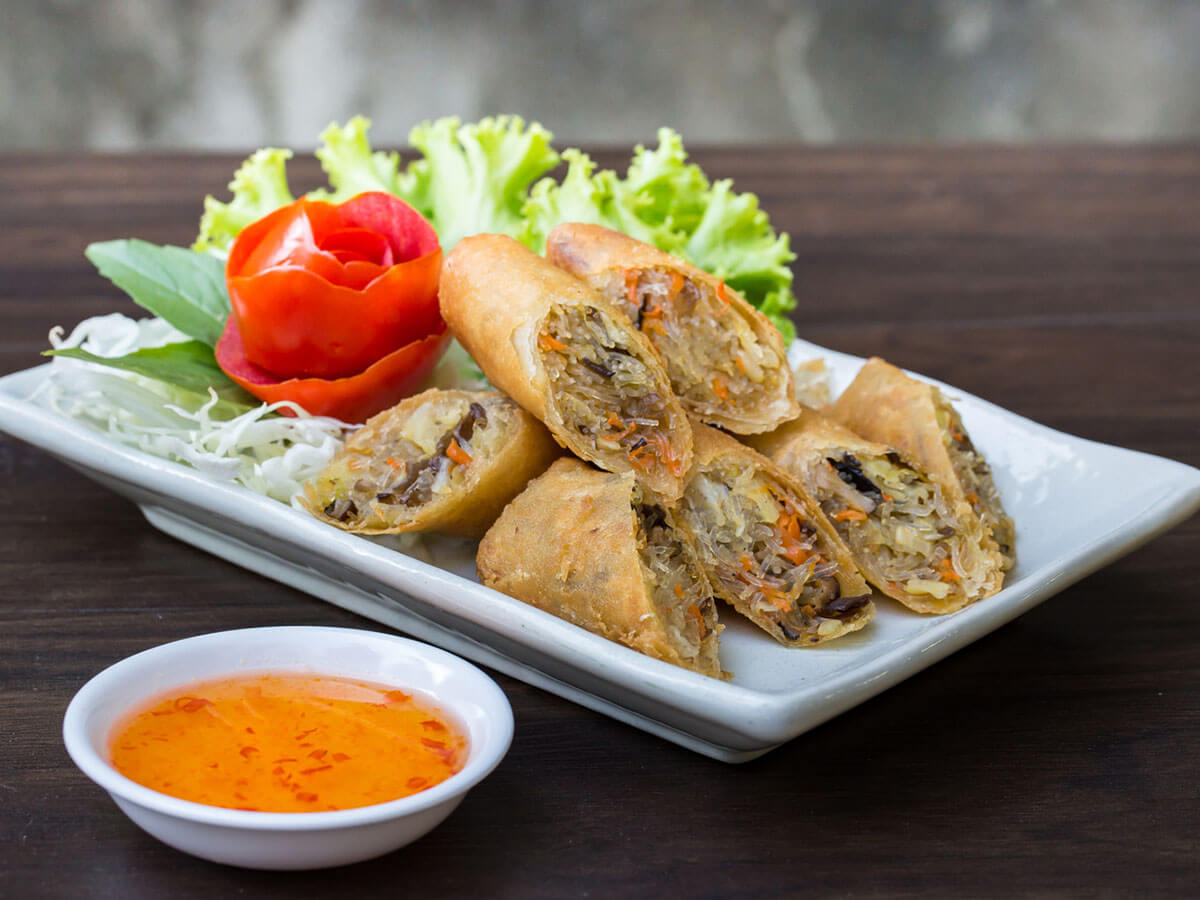
Chả Giò
Region: Native to Southern Vietnam
Wrapper: Made with bánh rế or bánh tráng bò bía
Filling: Comprises a complex blend of ingredients like ground meat, glass noodles, wood ear mushrooms, carrots, taro, etc.
Size: Size can vary, often quite sizable
Serving Style: Often served as a standalone item or as part of dishes like Bún Thịt Nướng and Bún Chả Giò
Dipping Sauce: Served with fish sauce mixed with garlic, chili, and sometimes sweetened, with pickled papaya or kohlrabi.
Additionally, be sure to review these commonly asked questions.



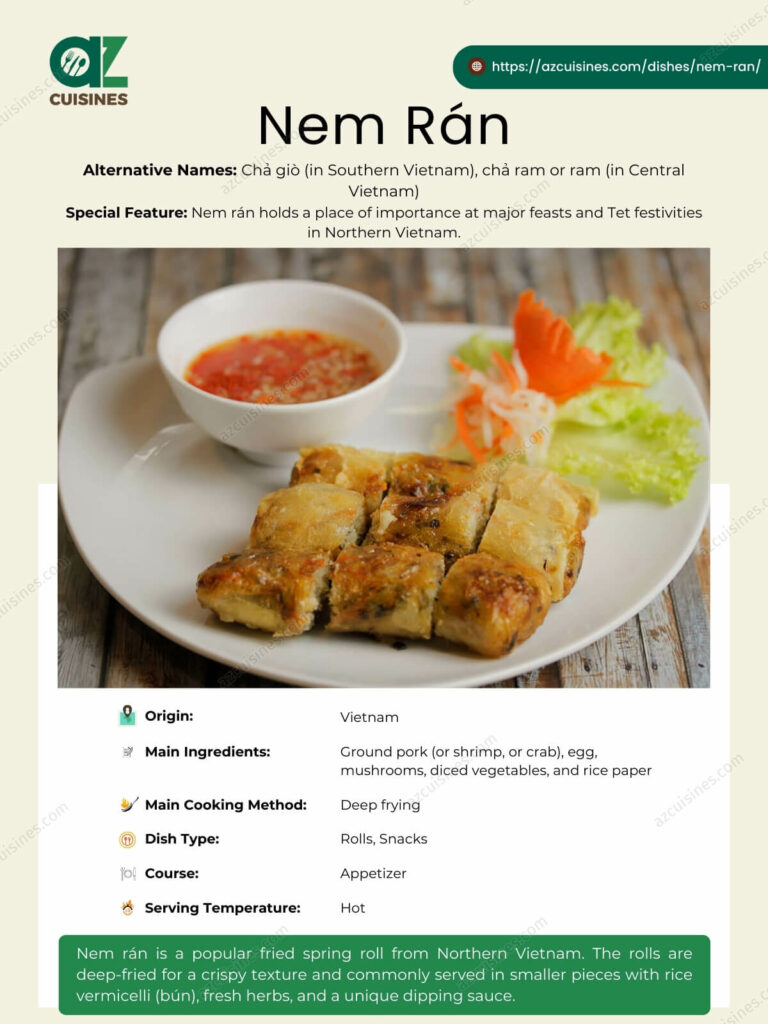
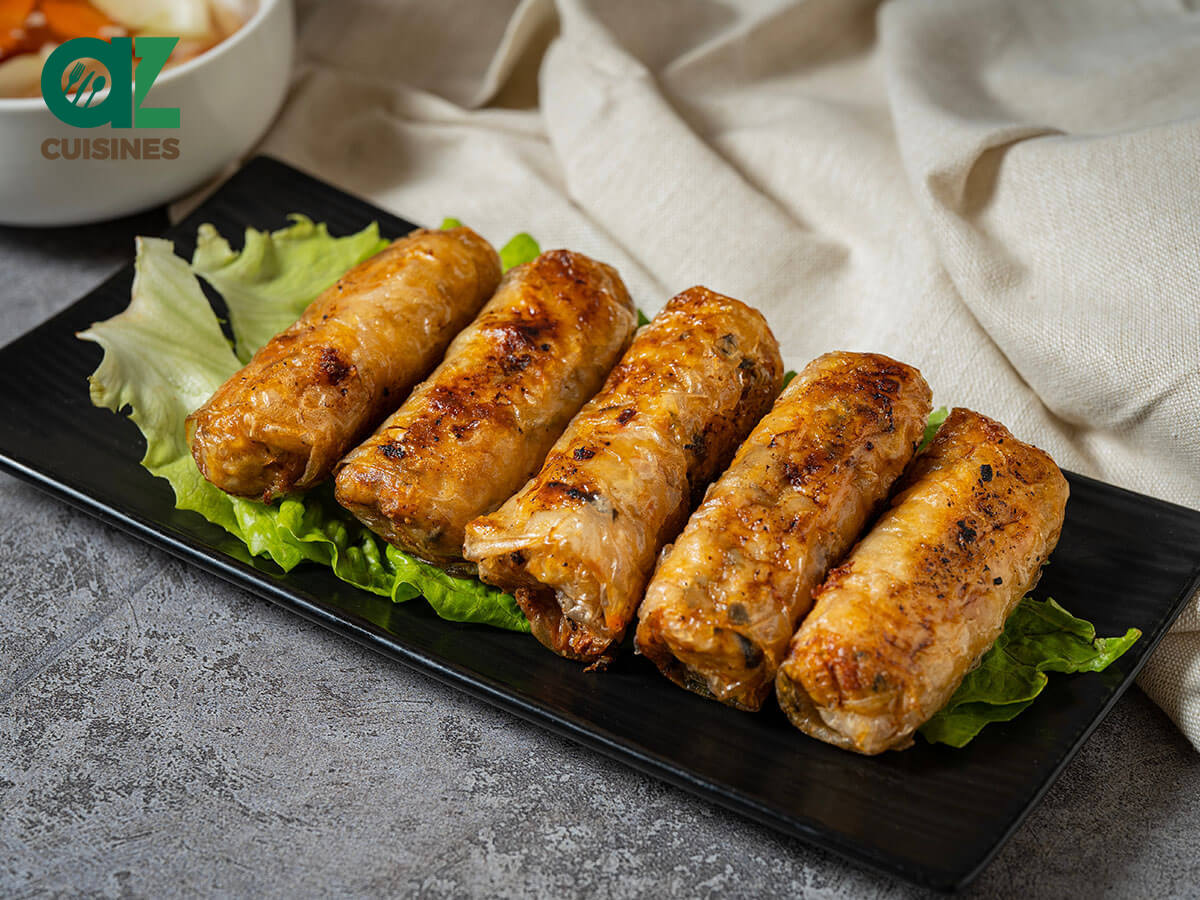
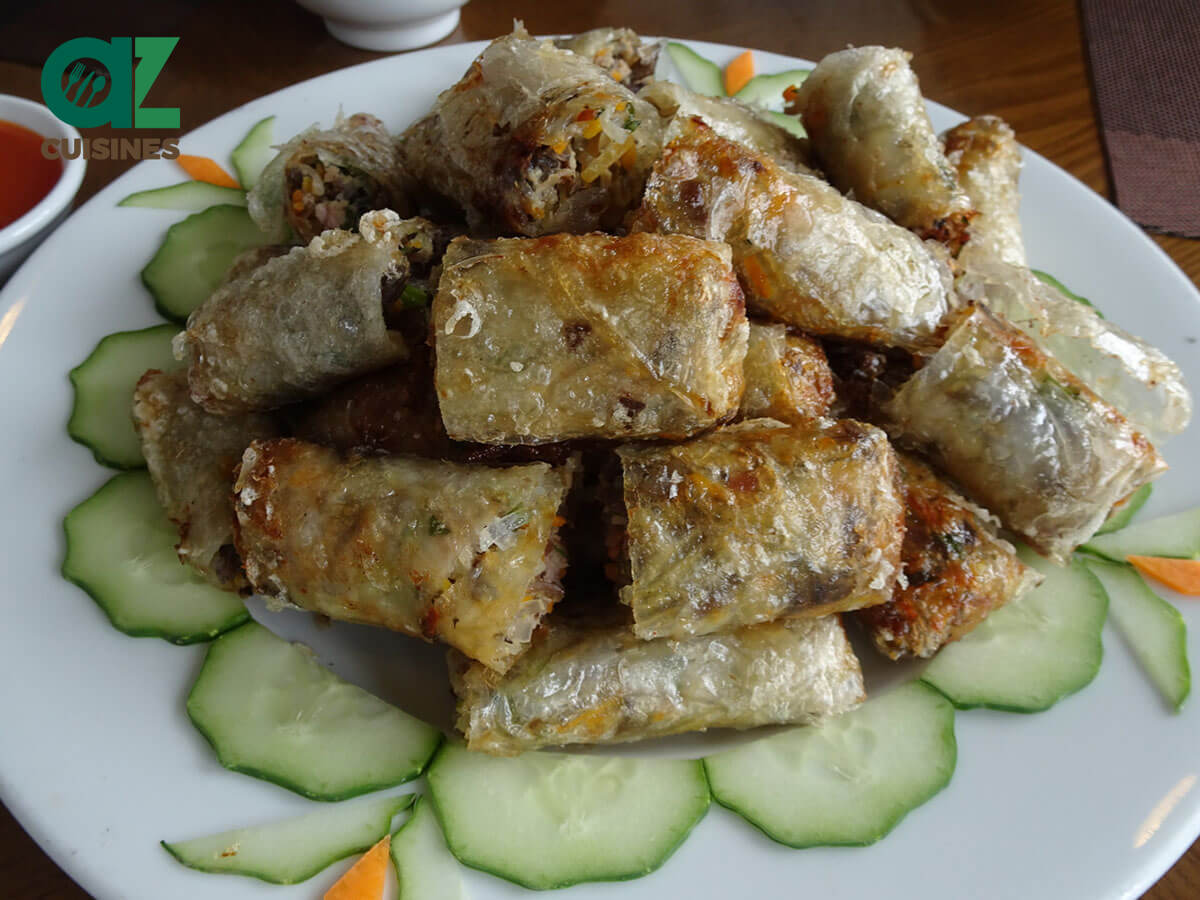

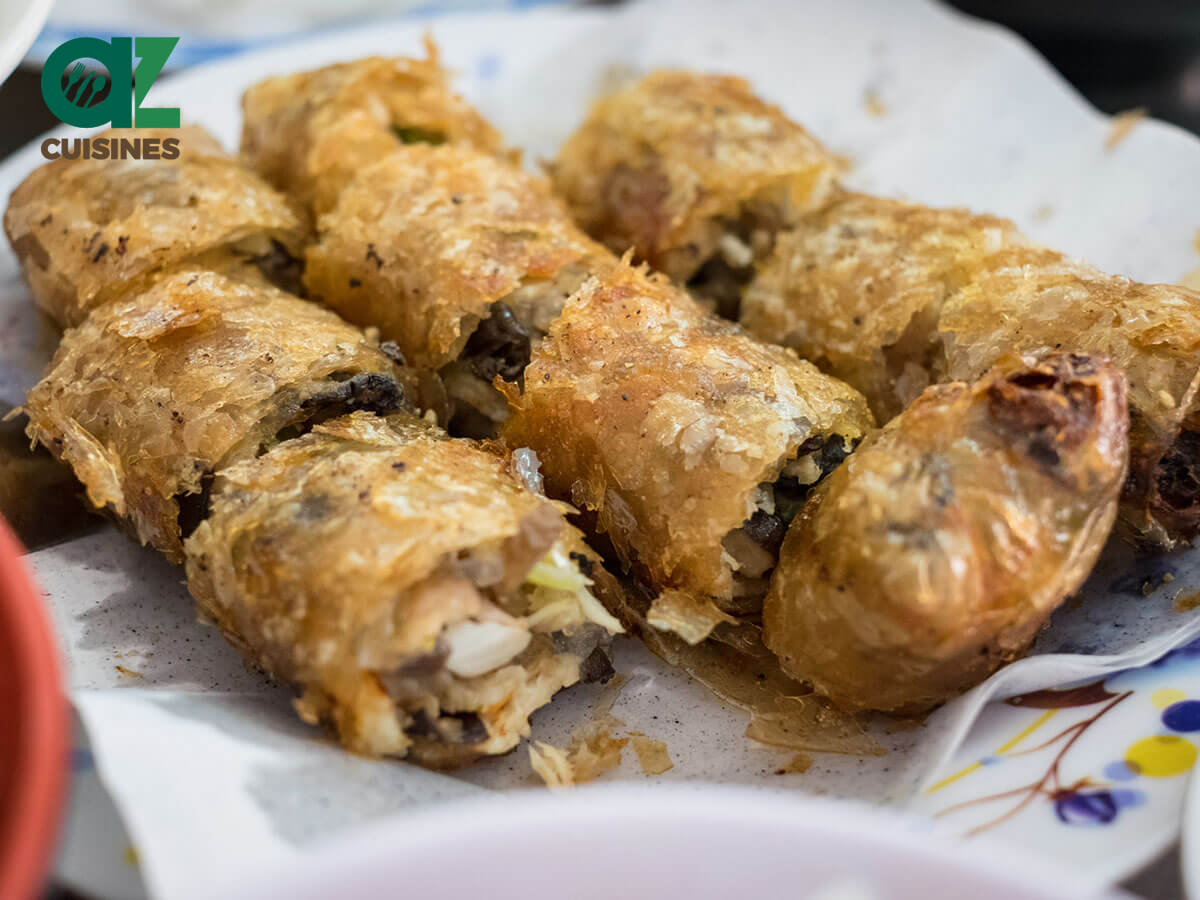
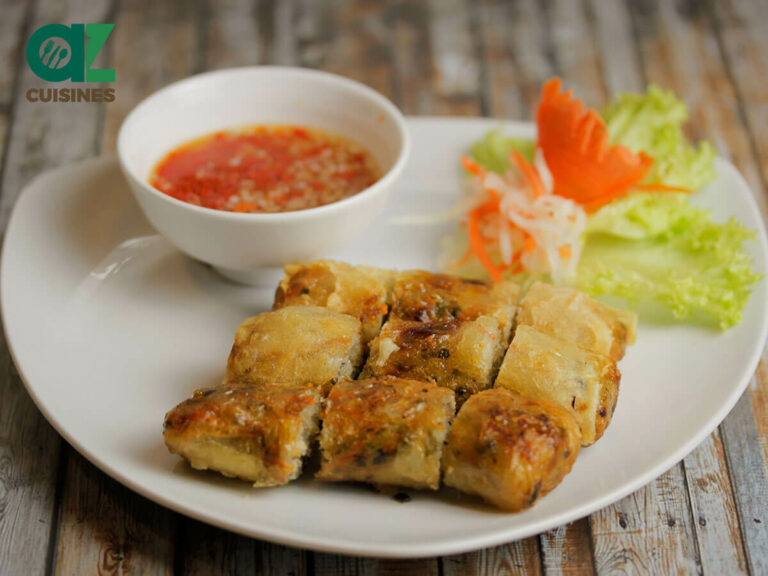

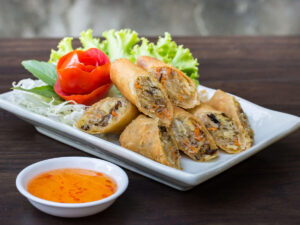
Truc Tran (Kris)
Senior Food Editor
Expertise
Home Cooking, Meal Planning, Recipe Development, Baking and Pastry, Food Editor, Cooking-video Maker, Vietnamese Food Evaluation Expert
Education
Truc Tran (Kris), an experienced food writer and editor, is great at exploring and describing global cuisines, from simple street food to fancy dining. In her writing, she skillfully mixes different flavors, cooking methods, and culinary traditions, showing the unique character of various cultures through their food and drinks. On azcuisines.com, Kris highlights her knowledge, especially in Asian cuisine and worldwide traditional dishes.